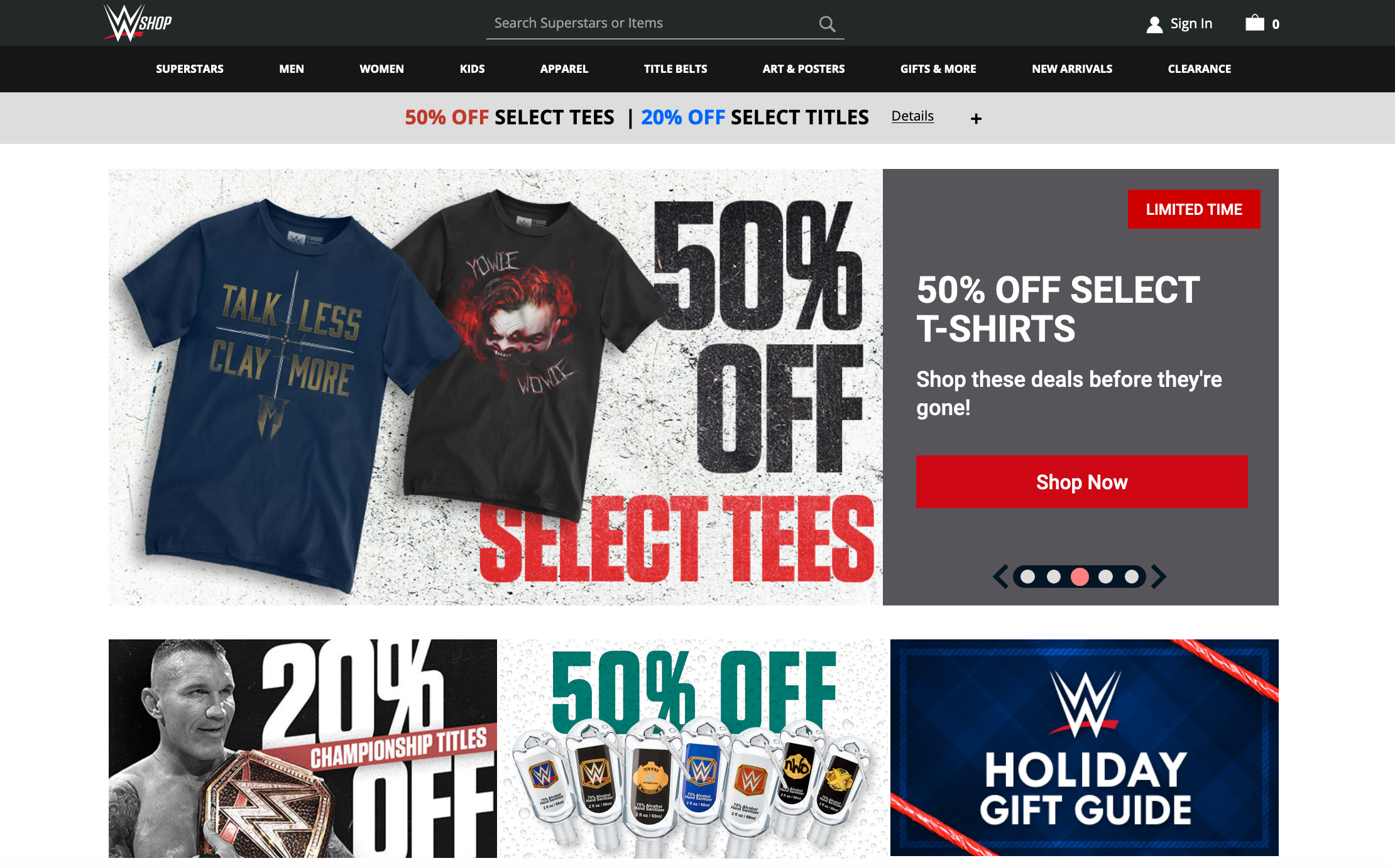The WWE has managed to almost completely offset revenue losses from not being able to sell merchandise at the arenas by pivoting to e-commerce.
The entertainment brand, which faced the same uncertainty as traditional sports unable to perform in front of arenas full of fans, saw e-commerce sales grow from $18.9 million to $27.7 million year-over-year for September. According to Yahoo Sports, total consumer products revenue reached $59.1 million, just shy of last year’s $60.9 million.
Keeping things basically on the same level as the previous year, given all of the outstanding circumstances, is an enormous feat and testament to the power of e-commerce stores.
“We wanted to decrease our speed to market and focus on providing our fans with unique and innovative merchandise to match what we were doing with programming,” Sarah Cummins, WWE vice president of consumer products, told Yahoo Sports. “We believe the shift to online is here to stay, and we are prepared to serve our fans however they want to transact.”

It wasn’t just a matter of making things available online, though. The WWE marketing team paid close attention to what was popular among fans, and took that into account when stocking the stores.
“It is also important to think like a fan and understand the new reality of everyday life,” Cummins said. “We noticed our collector category of Championship Title Belts and event-specific merchandise was growing, so we doubled down there. We also wanted to diversify our portfolio of products and invested in new selling platforms/branded sites that focused on WWE Legends and our YouTube gaming channel UpUpDownDown to deliver fresh, new merchandise.”
The lesson of e-commerce translates not only to other sports market, but anything within the entertainment umbrella, as well as business events. During the PRINTING United Digital Experience, for example, screen printers whose customer bases were largely performing artists that relied on touring to sell merchandise told stories about how boosting e-commerce offerings saved their businesses. In some cases, it created substantial growth for the business, and necessitated hiring more people on to manage that wing of the operation.
Once the pandemic slows down and fans are allowed back to events, there will always still be a place for in-person shopping. But, the lesson here is to maintain a robust e-commerce platform for those who can’t make it to events, as there are still plenty of fans watching from home.



